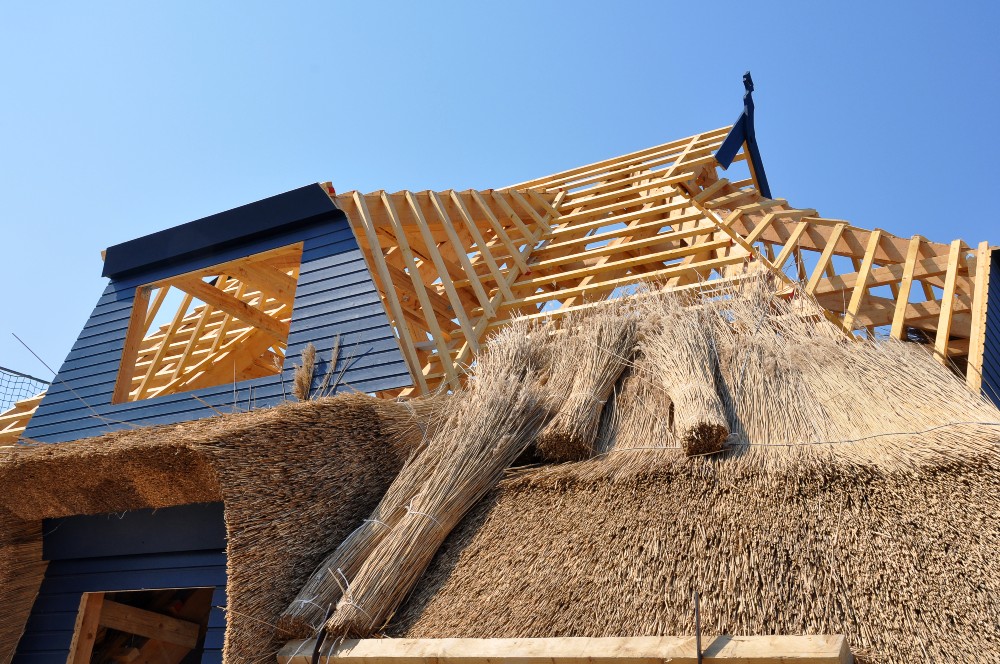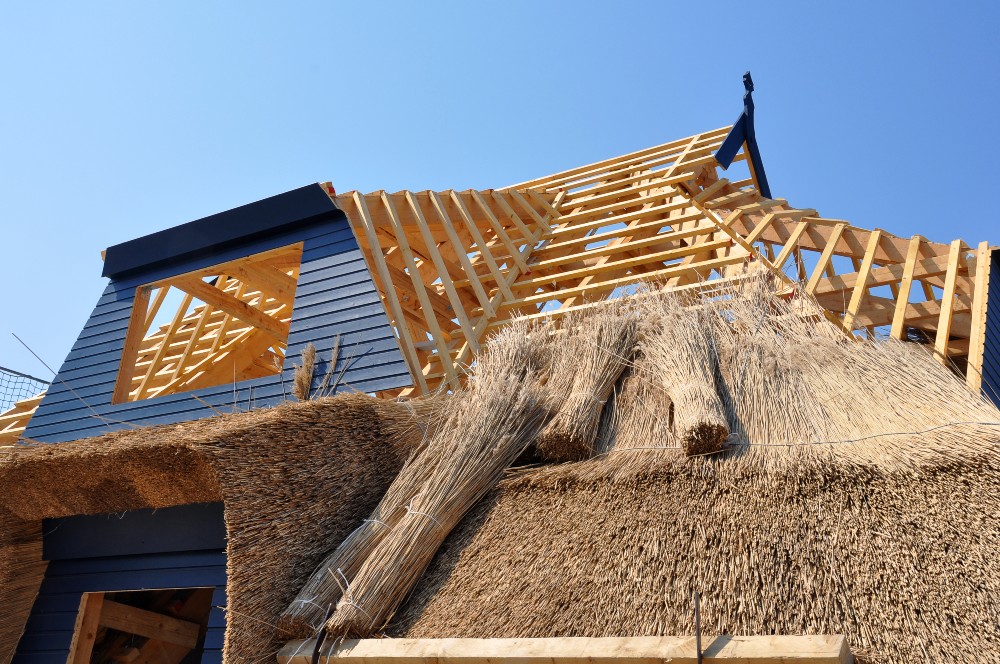Thatched roofs have been used for millennia to insulate and weatherproof human dwellings. Read on to learn more about this ancient roofing solution and find out if it is still an appropriate material option for modern commercial and residential structures.
What Is It?
Originating hundreds of years ago, thatching is an ancient roofing technique that utilizes locally sourced vegetation.
Throughout the world, there are diverse thatching methods passed down over generations. Fundamentally, however, the thatching process involves forming bunches of dried grass, straw, reed, rushes, or some other kind of vegetation. These are then lined up tightly on some type of pre-made framework atop a roof. Layer upon layer is then added until the whole roof is covered enough to make an insulated, water-resistant cover.
Because the roofing material isn’t 100-percent waterproof, it’s important that the roof has a slant so precipitation will run off across the dried vegetation. Since the thatching materials are usually densely packed, they will trap air between them, creating effective insulation. This has made thatched roofing a widespread roofing solution in both tropical and temperate climates.
The raw materials used for thatching tend to be defined by available local vegetation. In European regions, traditional materials mostly include reed and, in some instances, straw. In the Hawaiian Islands, pili and lauhala grass are used. Kenya’s thatched roofs are usually made of sugar cane, while Bali’s thatched roofs are mostly made of ijuk or alang-alang. In Fiji and Dominica, palm leaves are the most commonly used thatching materials.
More recently, high-quality artificial thatch has become popular in developed nations due to its durability and longevity. Still, thatched roofing is exceptionally rare in the modern world, where superior roofing materials are available in great quantities.
With that said, thatch roofing is still used in certain instances. Some celebrities have incorporated it into their home designs. Certain businesses, retreats, bars and restaurants sometimes use thatch roofing to create an authentic tropical feel. Still, it’s rare to see thatch roofing on modern structures, due to a number of issues, including the increased risk of fire, mold, leaks and local building restrictions.

If you believe your structure might be a candidate for thatched roofing, it’s important to get insight from a reputable roofing contractor. The right expert can tell you whether such a project is feasible and explain the risks and challenges associated with the job. For commercial businesses that want a tropical aesthetic, it’s often better to install a modern roof and add thatching aesthetics that give the impression of a thatched roof without the associated drawbacks.
The Best Materials for Every Roof Type
When it comes to choosing a material for modern roofs, there are several options. Depending on the structure, region and roof pitch, one will often be more appropriate than another.
Low-Slope of Flat Roofs
For roofs with little to no pitch, there are four available roofing material options available.
- Metal
- PVC (Polyvinyl Chloride)
- Modified bitumen
- TPO (Thermoplastic Polyolefin) membrane
Each material has its own pros and cons, including energy efficiency, durability, cost and more. We won’t dig too deep into these in this particular article, but you can always reach out to our team at A-to-Z Roofing and Exteriors to learn more about the advantages and disadvantages of any available roofing material.
For steep-slope or conventional roof types, there are more available options, including:
- Asphalt shingling (most available, affordable and common)
- Concrete, clay or stone tiling
- Clean slate
- Copper, steel or aluminum layering
- Thatching (very rare)
When it comes to choosing the right roofing material for your home or residential structure, there are many things to consider. From cost to durability to aesthetic appeal, every factor plays a key part in determining the best option for your specific circumstances.
If you’re weighing the pros and cons of potential roofing options, the experts at A to Z Roofing can help. For decades, we’ve specialized in new residential and commercial roofing installations, repairs and restorations. A locally owned Colorado business, we’ve continuously operated throughout the entire Denver metro area and the Front Range for almost a quarter of a century. During this period, we’ve served the needs of local businesses and residential homeowners, providing expert service using the very best roofing products. Contact our team of attentive, knowledgeable professionals to learn how we can repair, restore or replace your aging or damaged roof.

